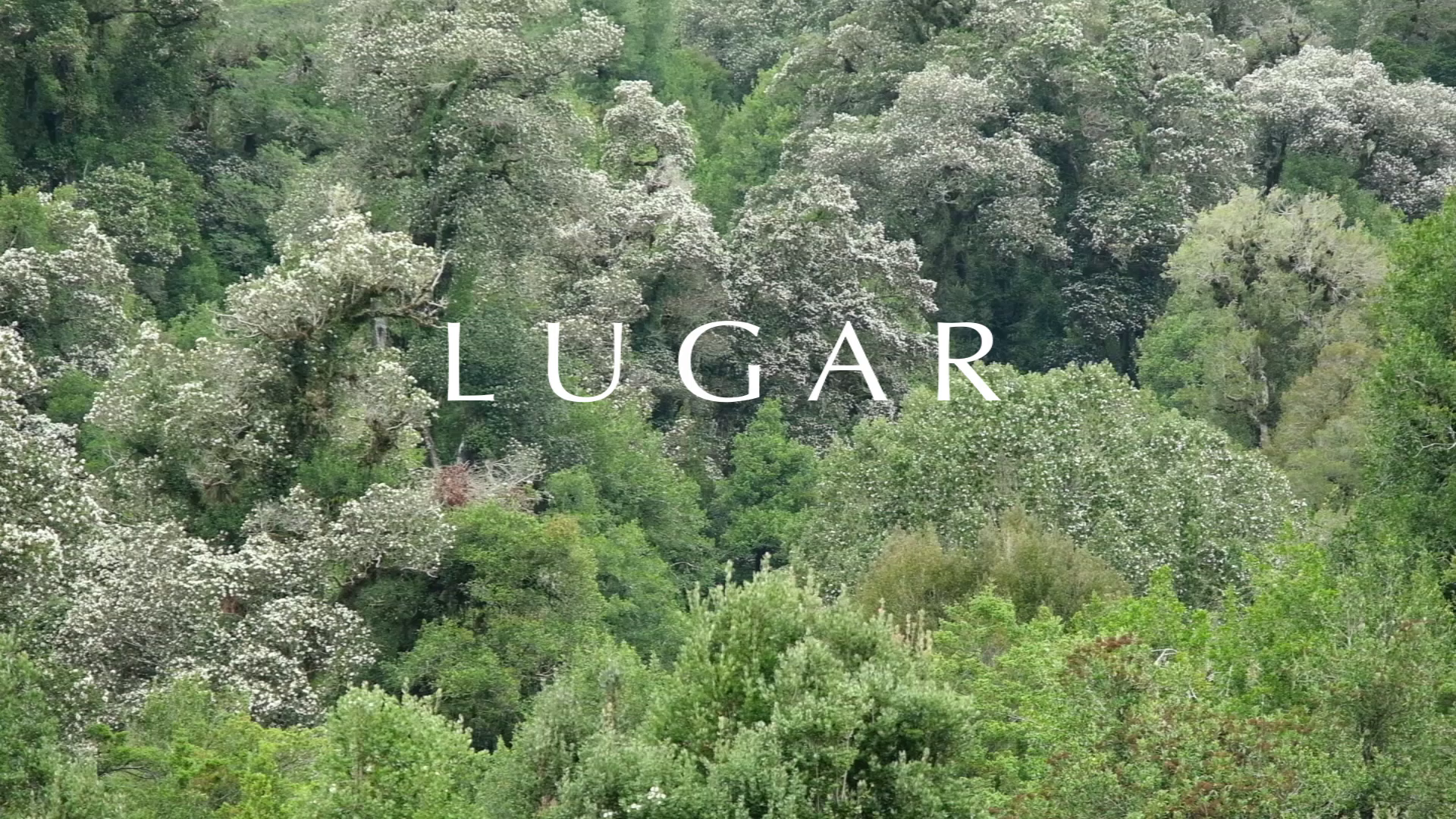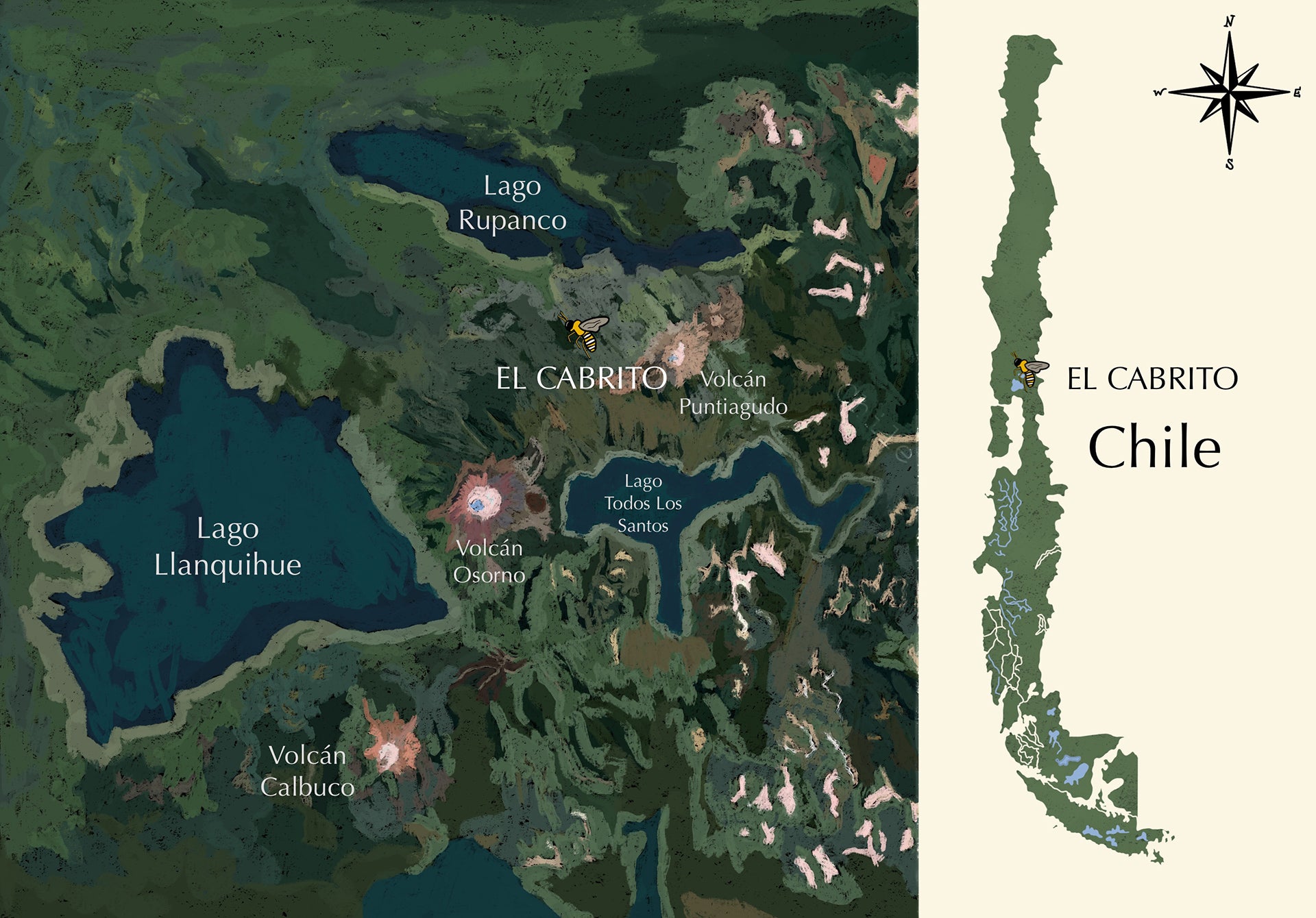PLACE
The place where our raw honey is produced is an endemic forest
located in the foothills of
Puerto Octay.
In the heart of southern Chile, where the Puntiagudo and Osorno volcanoes rise like eternal giants on the horizon, lies a hidden spot near the picturesque town of Puerto Octay.
This corner, surrounded by native forests and the crystal-clear waters of Lake Llanquihue, holds an ancient secret: a space where nature, energy, and the cosmos converge in perfect harmony.
THE KID
El Cabrito, a place nestled among the mountains, is a sanctuary where life manifests itself through the tireless work of its smallest and most mysterious inhabitants: the bees.
A vibrant ecosystem thrives among ancient Ulmo, Tiaca, and Tineo trees. Each tree symbolizes different forms of energy: the Ulmo , with its dense, nourishing nectar, represents the inner energy that flows from deep within, sustaining life in its most essential form. The Tiaca embodies kinetic energy, the constant movement reflected in the incessant fluttering of the worker bees. Meanwhile, the Tineo stores potential energy, waiting for the right moment to be released and create new life forms.

The bees, under the guidance of the queen, work in harmony with the energies of the forest. By collecting nectar from flowers, they transform the very essence of the trees into honey, a sweet, golden substance that connects humans with nature.
The subtle buzzing of bees is a primordial vibration that reminds us of the sonic cosmogony postulated by Hinduism. According to this tradition, the universe began with a sound, an original reverberation identified with the sacred syllable AUM/OM, and in this corner of the world, the constant buzzing of bees is its echo, a manifestation of that cosmic vibration.
This forest, protected by the shadow of volcanoes, is a place of spiritual communion. Here, the work of the bees intertwines with the power of nature, creating a space where time seems to stand still. The process of harvesting honey in El Cabrito is a ritual act; the person and the bee collaborate in a dance, transforming the forest nectar into an elixir of vitality.

For travelers, this hidden paradise is accessible via Route U-55 from Puerto Octay, about 60 km from Puerto Varas. The road winds through hills and forests, offering stunning views of the Osorno and Puntiagudo volcanoes, whose peaks dominate the landscape. Upon arrival, visitors will find a gateway to the stillness of nature.
The Kid is the fruit of a sacred communion between nature and the cosmos, an offering made by the bees, guardians of an ancient mystery.
Chile is an incredible country. It contains chains of volcanoes along its majestic Andes mountain range. These are tectonic plates. Volcanoes usually originate at the edges of these plates and can form in two different ways. The first occurs at convergent edges. For example, when an oceanic lithospheric plate and a continental plate converge or collide, because the former is denser than the latter, what geologists call a subduction process occurs; that is, the plate sinks, forming an oceanic trench. In this process, due to both the enormous friction and the loss of water from the subducting crust, rocks melt and magma is generated. Magma rises due to the difference in temperature and density, giving rise to volcanic eruptions and, with them, new volcanoes. This is the case of the Andes mountain range and its numerous volcanoes, which formed due to the collision of the Nazca Plate.
Endemism is a term used in biology to indicate that the distribution of a taxon is limited to a small geographic area and, therefore, can only be found naturally in that location. Chile's unique geographic characteristics, with varied and insurmountable natural boundaries (desert, mountain range, and sea), lead the country to be considered a biogeographic island. This condition provides the keys to its high degree of endemism, as between 22 and 25% of the species described for Chile are endemic, meaning they only live within the boundaries of the national territory. Thus, the varied climatic and ecosystem conditions distributed from north to south in this long, narrow strip located between the Pacific Ocean and the Andes mountain range have favored the presence of a unique biodiversity.